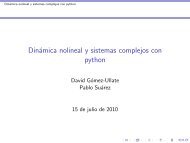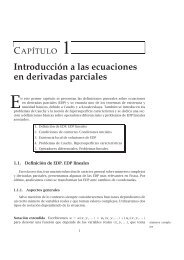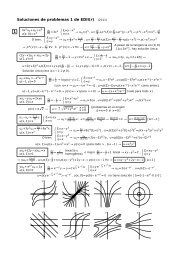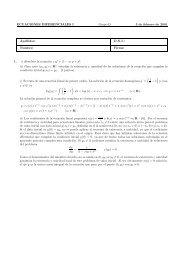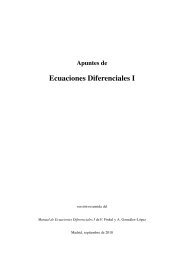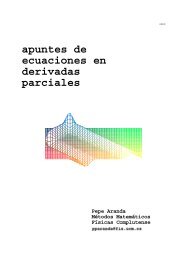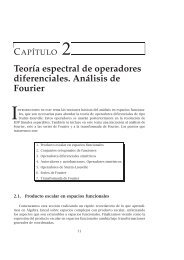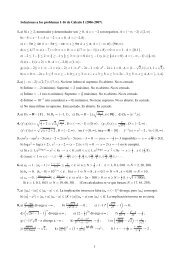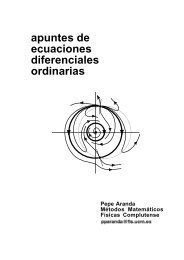4. Series, Taylor y lÃmites indeterminados
4. Series, Taylor y lÃmites indeterminados
4. Series, Taylor y lÃmites indeterminados
Create successful ePaper yourself
Turn your PDF publications into a flip-book with our unique Google optimized e-Paper software.
También serán muy útiles los temas de este capítulo en el dibujo de gráficas:Ej. f (x)= e −1/x2 , f (0)=0 . Comprobemos primero, como dijimos en <strong>4.</strong>4, que f (n) (0)=0 ∀n .Para x ≠ 0 es: f ′ (x) = 2 x 3 e −1/x2 , f ′′ (x) = [ 4 x 6 − 6 x 4 ]e −1/x2 , f ′′′ (x) = [ 8 x 9 − 36x 7 + 24x 5 ]e −1/x2 , ...Entonces: f ′ (0)= límh = lím te −t2 = 0 , f ′′ (0)= límt→∞[pues et 2 es mucho mayor que e t ( e t /e t2 = e t−t2 →h→0e −1/h22e −1/h2h→0 h 4= lím t→∞2t 4 e −t2 = 0 , ...t→∞e −∞ = 0 ) y sabemos que t n e −t → 0t→∞Para cualquier n , tras hacer h= 1 t , acabaremos en: f (n) (0)= lím (polinomio)·e −t2 = 0 .t→∞Para hacer el dibujo observamos que:1f es par y es f (x)≥0 . f (x)→ e 0 =1 si x → ±∞ .f crece para x>0 y decrece si x



